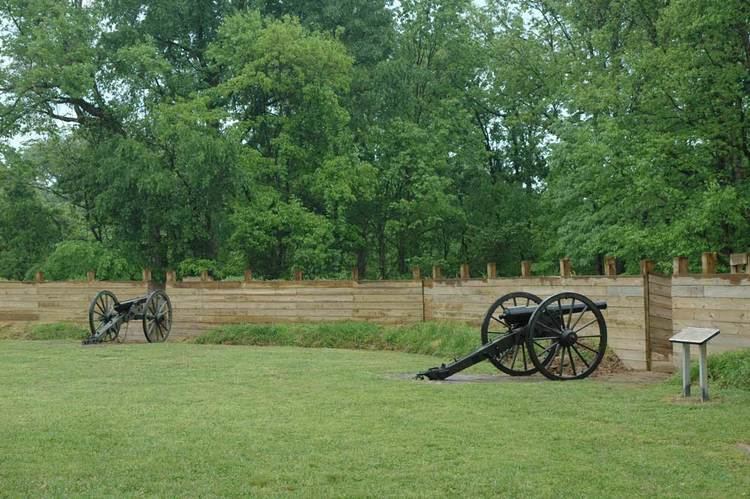Type Tennessee State Park Created 1971 Built 1861 Area 6.645 km² Added to NRHP 11 April 1973 | Location Henning, Tennessee Nearest city Osceola, Arkansas Opened 1861 Phone +1 731-738-5581 | |
 | ||
Location TN State Route 87, Lauderdale County, Tennessee Address 3122 Park Rd, Henning, TN 38041, USA Hours Closed now Tuesday8AM–4PMWednesday8AM–4PMThursday8AM–4PMFriday8AM–4PMSaturday8AM–4PMSunday8AM–4PMMonday8AM–4PM Similar Cordell Hull Birthplace, Mousetail Landing State Park, Big Cypress Tree Stat, Big Hill Pond State Park, Nathan Bedford Forrest St | ||
Fort pillow state park
Fort Pillow State Park is a state park in western Tennessee that preserves the American Civil War site of the Battle of Fort Pillow. The 1,642 acre (6.6 km²) Fort Pillow, located in Lauderdale County on the Chickasaw Bluffs overlooking the Mississippi River, is rich in both historic and archaeological significance.
Contents
- Fort pillow state park
- Fort pillow state park tennessee
- Confederate fort 1861
- Union fort and Battle of Fort Pillow
- Historic site and museum
- References
Fort pillow state park tennessee
Confederate fort 1861
In 1861, the Confederate army built extensive fortifications here and named the site for General Gideon Johnson Pillow of Maury County.
Union fort, and Battle of Fort Pillow
Because of its strategic location, controlling traffic on the Mississippi River, the fort was attacked and captured by the Union Army, which controlled it during most of the war. June 4, 1862 – American Civil War: Confederate troops evacuated Fort Pillow on the Mississippi River, leaving the way clear for Union troops to take Memphis, Tennessee. An exception to this control occurred for less than one day immediately after the Battle of Fort Pillow in 1864.
The Confederate victory at the Battle of Fort Pillow (April 1864) resulted in the killing of 229 of the 262 black Union soldiers engaged in the battle. The white soldiers numbered 285. An examination of regimental records showed that "less than 36 percent of the men from white units died in battle or of wounds, while the death toll for black units was 66 percent."
This slaughter by the Confederate troops under Gen. Nathan Bedford Forrest has been labeled a massacre; Confederate apologists debate the fatality numbers. A Confederate wrote in a letter home that "Forrest ordered them [negroes] shot down like dogs, and the carnage continued." In addition to regimental records, contemporary accounts by troops on both sides, as well as journalist, describe it as appalling slaughter. Within about three weeks, as political controversy grew, Confederates began to debate accounts of a massacre.
"Remember Fort Pillow!" became a battle cry among black Union soldiers for the remainder of the Civil War.
While the Union casualty count for the battle does not indicate that the Confederate forces took many prisoners, Confederate records show about 200 prisoners were shipped south.
In 1866, the Union Army created a cemetery for both Confederate and Union soldiers south of the battle site. In 1867, they moved about 250 bodies of Confederate and Union soldiers from that cemetery to the Memphis National Cemetery.
Historic site and museum
In 1973, the site was added to the National Register of Historic Places. It was designated as a National Historic Landmark in 1974. Remains of the earthworks were well-preserved as of 2011.
The park has an interpretive center and museum (open 8 a.m. – 4 p.m. daily, except for certain holidays). Tours of the museum and restored fortifications are available upon request. The park also offers many recreational activities, including camping, picnicking and fishing.
